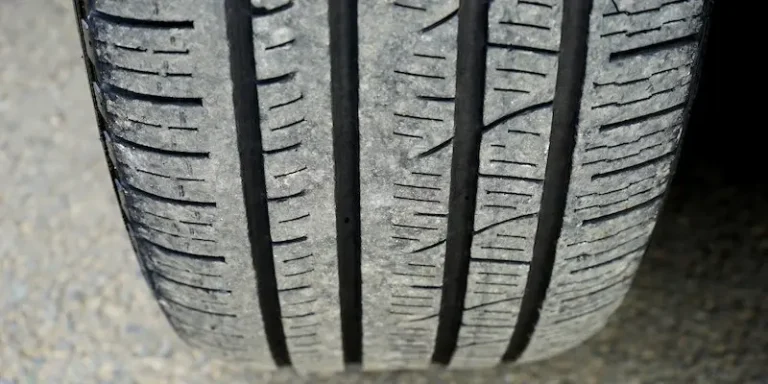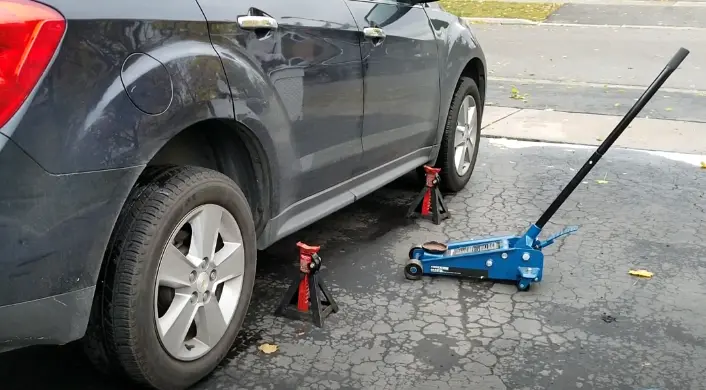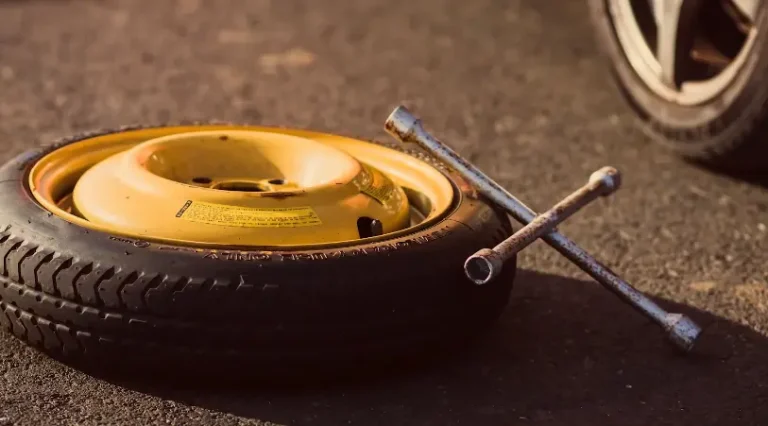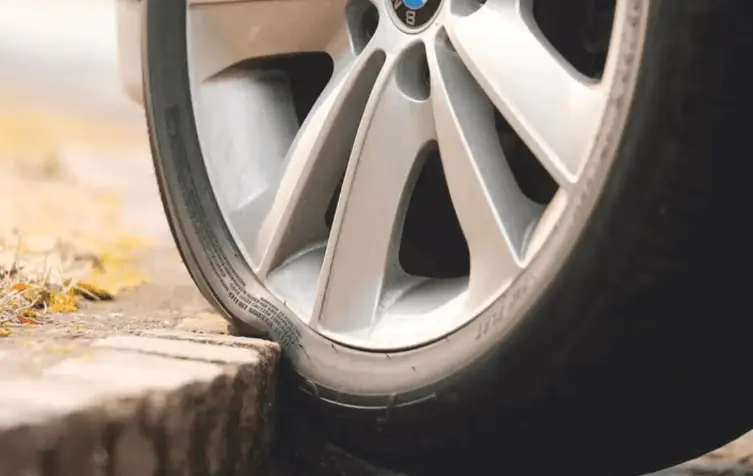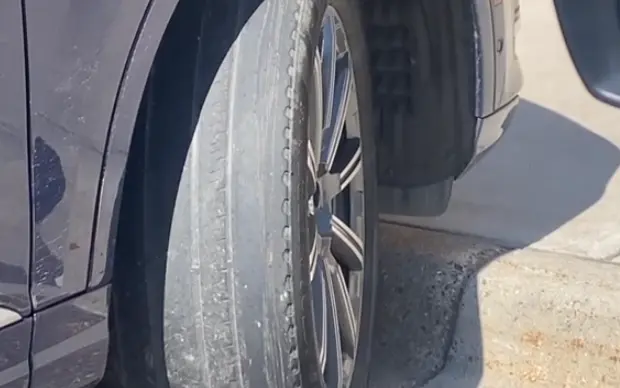Tire Sidewall Damage – Causes and Fixes
Honestly speaking, any damage to the tire’s sidewall should be considered too much. The tire’s sidewall can be damaged after hitting a curb or pothole. Any puncture on the tire’s sidewall that can break the cords may damage the tire’s sidewall significantly.
If you notice any bulges, torn or chipped, blisters, irregular wear, cuts, and cracks on the tire sidewall. In that case, you should replace this tire with a new one because repairing such type of tire damage from the sidewall isn’t acceptable for a secure drive.
Let’s find out all the causes of tire sidewall damage and impacts on your drive.
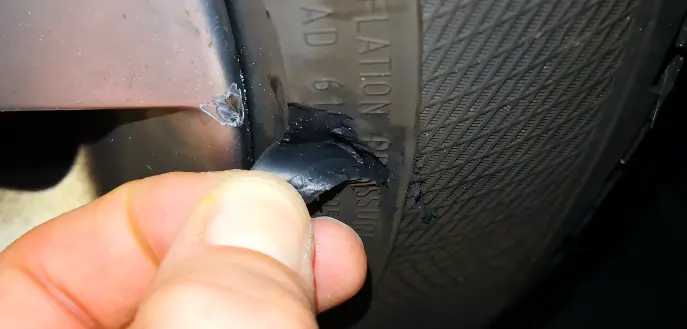
What is a Tire Sidewall Damage?
Any damage on the tire’s sidewall, whether on the outer or inner side of the sidewall, will be considered sidewall damage. Most of the time, these damages on the sidewall of the tire can’t be repaired, and you’ve to replace the damaged tire with a new one.
Because there’re no steel cables on the sidewall as in the tire tread, so any damage to the tire sidewall, can progress quickly and be unsecure to drive on.
Most common signs of damage to the tire sidewall such as missing huge chunks of rubber tissues from the tire sidewall, bubbles or bulges on the sidewall, abrasions caused by hitting a curb or pothole, and cracks and cuts on the tire sidewall.
If you spot any of them on your tire sidewall, you should visit your tire expert to figure out the current health status of your tire.
Tire Sidewall Damage Causes
Numerous factors can cause damage to the tire sidewall. The most common factors are discussed in detail below.
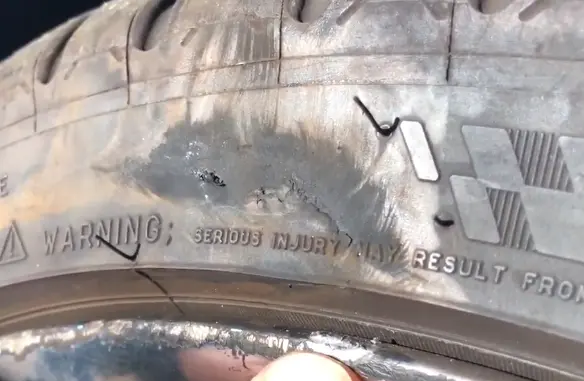
Overloading
Overloading can cause damage to the tire sidewall because when you overload your vehicle, it will damage your suspension and tire sidewall. The air in the tire gets heat due to friction while moving and puts pressure on the tire sidewall, which outputs tire sidewall damage.
This damage can be in the form of a tire bulge, blister, bubble, or puncture on the sidewall that may lead to tire expiry. So, you should always load your vehicle as per the mentioned load range on the tire sidewall to keep your vehicle’s tires strong.
Age of Tire
Normally the life span of a tire is from 3 to 5 years, depending on multiple factors like tire usage, tire care, drive conditions, etc. You’ll notice cracks on the tire sidewall and tire tread when your vehicle’s tire gets old, and the rubber becomes dry and loses its strength.
The tire manufacture date is mentioned on each tire. You can calculate your tire’s age and change them when needed.
Under Inflation Tire
In today’s modern era, most vehicles have tire pressure monitoring system that lets you know about your vehicle’s tire pressure and which car tire is inflated.
However, you should regularly check the air pressure in the tires because under-inflated tires pass more pressure to the sidewall of the tire, and this can cause damage to the sidewall of the tire.
Manufacturer Defects
Manufacturing defects can also cause sidewall damage. During production, a tire may be mistakenly rated wrong for speed and load category. Then the same tire will not run long and cause multiple defects like damage and cracks on the sidewall.
Usually, such types of damage to the tire sidewall don’t cover by a warranty.
Hitting a Curb or Pothole
The tire sidewall can be damaged after hitting a curb or pothole. More often, you notice no air leak after hitting, but sometimes your tire gets out of the air instantly.
The tire is the only part of a vehicle that has direct contact with the road while driving. That’s why hitting a curb or pothole can damage the tire’s sidewall in the form of a bulge, cracks and abrasions.
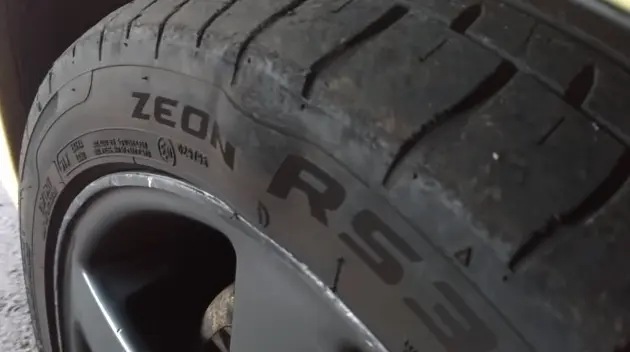
Is it Safe to Drive on a Tire with Sidewall Damage?
You shouldn’t drive with a sidewall-damaged tire. The tire’s sidewall is more sensitive than the tire tread because there’re no steel wires on the tire sidewall, So driving on a sidewall-damaged tire is not secure for you and other drivers on the road.
If you assume the sidewall damage isn’t a big issue to worry about and you can drive some miles with it, you’re putting yourself and other people on the road in a dangerous situation. So, it’s recommended that you should immediately replace the sidewall damaged tire with a new one.
Tire Sidewall Damage Repair
If your tire gets damaged from the sidewall, you should instantly replace this tire with a new tire. Damage on the tire sidewall can’t be repaired.
As we’ve discussed earlier, there’re no steel wires on the tire sidewall, that’s why the tire sidewall bears more air pressure and load of the vehicle than the tire tread.
So, minor damage to the tire sidewall can also lead to a tire blowout and potential danger for you and other drivers on the road. Replacing the sidewall damaged tire with a new one is the best practice.
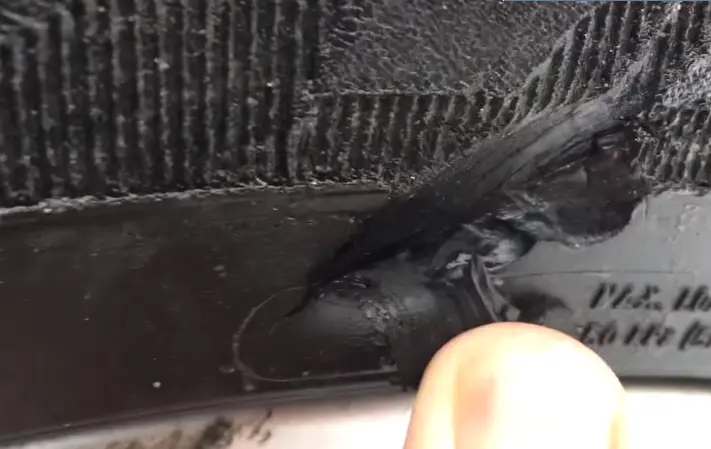
Tips to Avoid Sidewall Tire Damage
Prevention is better than cure. You can avoid tire sidewall damage and other damages by following some tips and driving laws. Here are some valuable tips to avoid sidewall damage to your tire.
Check the Tire Pressure
You should check your tire air pressure regularly. The best practice is to check air pressure once a week. The tire sidewall can damage from driving on a flat tire. Moreover, under-inflated tires consume more fuel, and you’ll not experience a good drive.
Drive Carefully
You should drive carefully by avoiding curbs and potholes. Before moving, choose the best and clean route and avoid driving on uneven roads.
Check your Tires from Tire experts
Check your tires from a tire expert once a month or after every 2 months and know the current health status of your tires.
Use your Tires as Per Recommendations
Inflate the tire air pressure per tire category, and also look at the load and speed range of your tire to make your tire’s life long.
Cross Move your Tires
Rotating your tires in a cross X direction after every 10,000 KM is good. All the tires of your vehicle will be equally used.
FAQs
Is sidewall tire damage dangerous?
Yes! Any damage to the tire sidewall is dangerous and can lead to a tire blowout if left unchecked.
Do I need to replace a tire with sidewall damage?
Yes! It’s recommended that you shouldn’t drive on a sidewall damaged tire and replace it with a new tire.
Can a damaged tire sidewall be repaired?
No! A damaged sidewall tire can’t be repaired, and someone shouldn’t try to fix it. The only solution is to get a new tire.
How thick is the sidewall of a car tire?
Tire sidewall thickness may vary from tire to tire, but most sidewalls are thick between 0.236 inch to 0.590 inch.
Can a puncture in the sidewall be fixed?
No! Any puncture or damage to the tire’s sidewall couldn’t be fixed or repaired.
Conclusion
Sidewall damage is the most dangerous damage to the tire. All the causes of tire sidewall damage are discussed. You can follow the above-mentioned tips to avoid sidewall damage in future.
Once you notice the sidewall damage, you should replace this tire with a new one because the damaged sidewall of a tire can’t be repaired or fixed as we fix the punctured tire.

